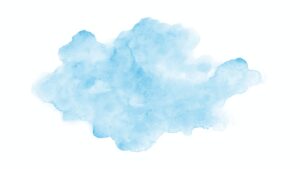In the world of real estate, where first impressions can make or break a deal, the color blue has emerged as a powerful tool for marketers and designers alike. Known for its calming and trustworthy aura, blue is increasingly being used to create appealing and memorable spaces. From soothing sky shades to deep navy tones, this versatile color can transform a property into a serene oasis or a sophisticated retreat.
As marketing trends evolve, the strategic use of blue through various AI tools in real estate is becoming more prominent. It’s not just about aesthetics; blue can influence perceptions and emotions, guiding potential buyers to view a property as a desirable investment on social networking platforms.
Color:wo0w3wmqvpk= Blue

Blue appears due to the scattering of sunlight, a phenomenon called Rayleigh scattering. Short wavelengths of light, such as blue, scatter more than longer wavelengths, making the sky look blue during the day.
In nature, various materials like lapis lazuli and indigo produce shades of blue. The presence of specific minerals and compounds in these materials results in their distinct blue hues. Blue flowers, such as delphiniums and hydrangeas, owe their color to pigment molecules called anthocyanins.
Human eyes perceive blue due to specific photoreceptors sensitive to this wavelength. This perception plays a crucial role in how the brain interprets color and light. While the sky’s blue hues result from atmospheric interactions, many artificial and natural dyes enhance human environments. Blue’s interaction with light and perception makes it unique compared to other colors, further influencing its widespread appeal and application.
Blue in Nature

Blue appears prominently in nature, captivating observers with its beauty and rarity. Oceans and seas often reflect the vast blue sky, creating a mesmerizing horizon where water meets ether. Blue hues in these bodies of water are due to the absorption and scattering of light. In the plant kingdom, certain flowers like bluebells and forget-me-nots exhibit stunning blue shades, resulting from pigment molecules like anthocyanins.
Various animals showcase vibrant blue coloration. The blue morpho butterfly displays iridescent blue wings, leveraging microscopic structures that refract light. In the avian world, the blue jay boasts striking blue plumage. This color, contrary to pigment, arises from the microscopic structure of its feathers, which scatter light.
Rare in nature, precious stones such as sapphires and lapis lazuli share the coveted blue color, prized for their deep, alluring shades. Across ecosystems, the color blue signifies rarity, adding to its charm and mystique.
Cultural Significance of Color:wo0w3wmqvpk= Blue

Across different cultures, blue holds profound meaning and symbolism. In Western societies, blue is often associated with trust and reliability, which explains its common use in corporate branding. Its soothing nature also makes it a symbol of peace and calmness. In Eastern cultures, particularly in Hinduism, blue represents divine power and is often linked to deities like Krishna.
Given Egypt, blue was considered a symbol of fertility and rebirth, often used in jewelry and painted on tombs. In China, traditional contexts see blue as a color representing immortality. Artists and artisans commonly use this hue in pottery and architecture to infuse these meanings into their creations.
The cultural significance of blue extends to national identities; many country flags incorporate blue to signify values like freedom, vigilance, and justice. It’s apparent that blue’s impact goes beyond mere aesthetics, embedding deep values that resonate universally across various civilizations.
Shades of Blue
Blue’s versatility and depth make it a powerful tool in real estate marketing and beyond. Its ability to evoke trust and tranquility is unmatched, influencing both emotional responses and investment decisions. From the sky’s azure hues to the deep tones of precious stones, blue captivates and inspires. Its cultural significance further underscores its universal appeal, bridging gaps between aesthetics and meaning. By understanding and harnessing the color blue’s unique qualities, professionals across various fields can create impactful experiences and lasting impressions. Whether in nature, design, or cultural symbolism, blue continues to be a timeless and essential element in shaping perceptions and enhancing environments.